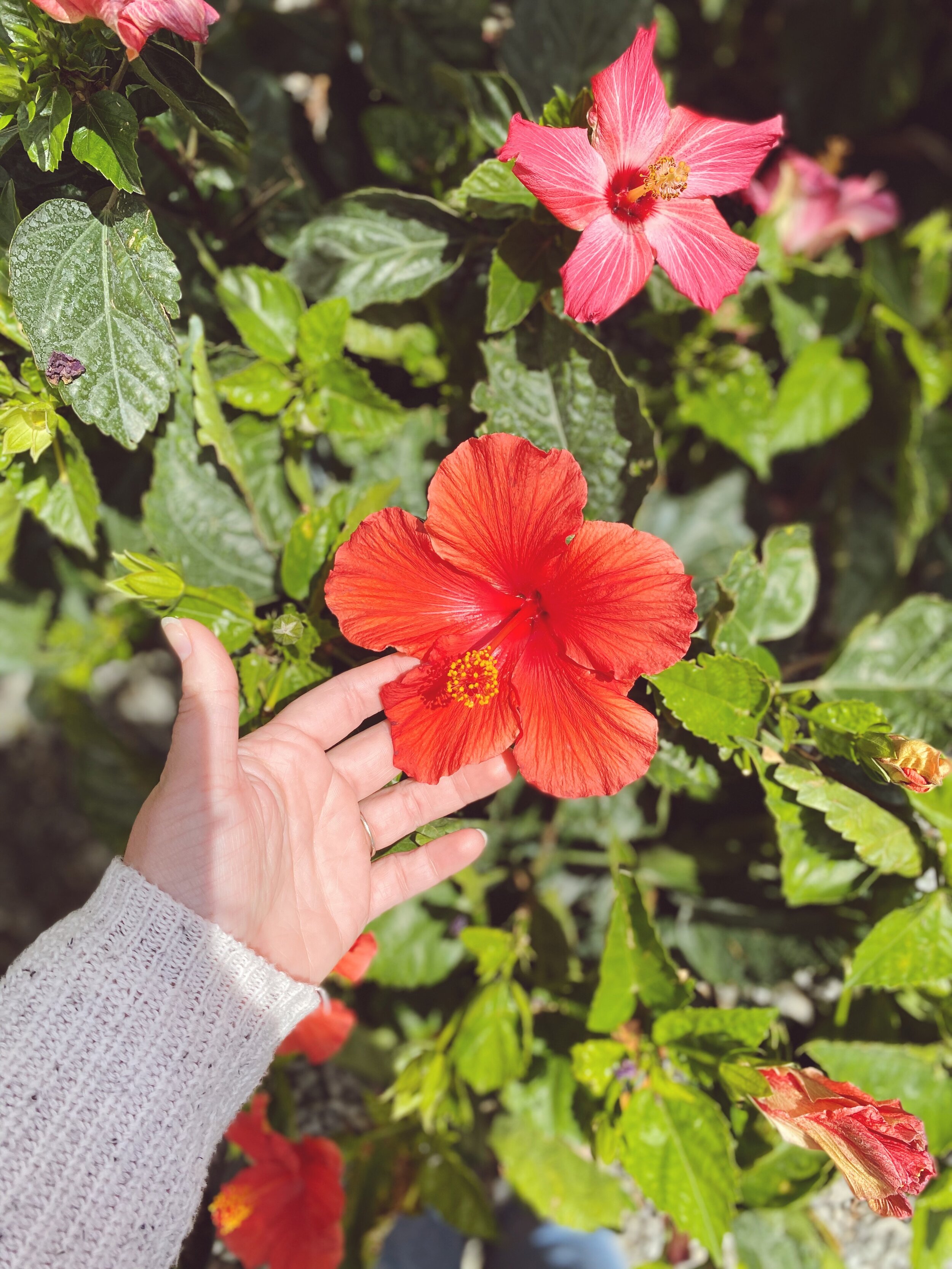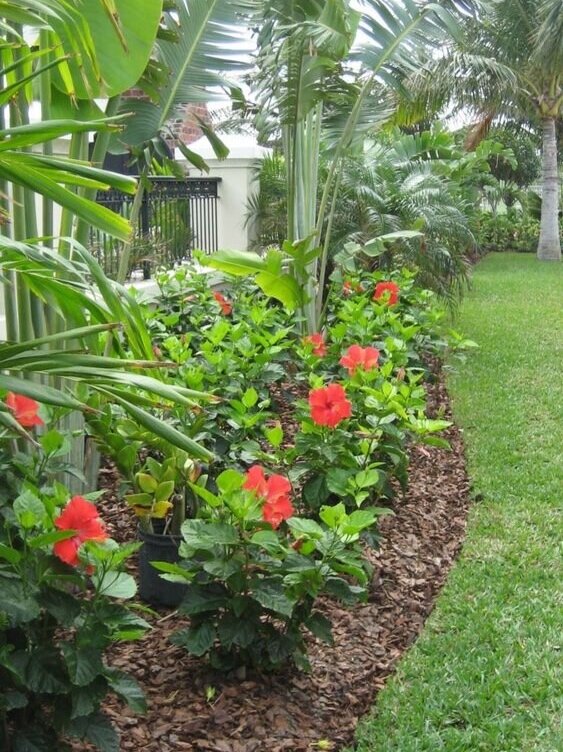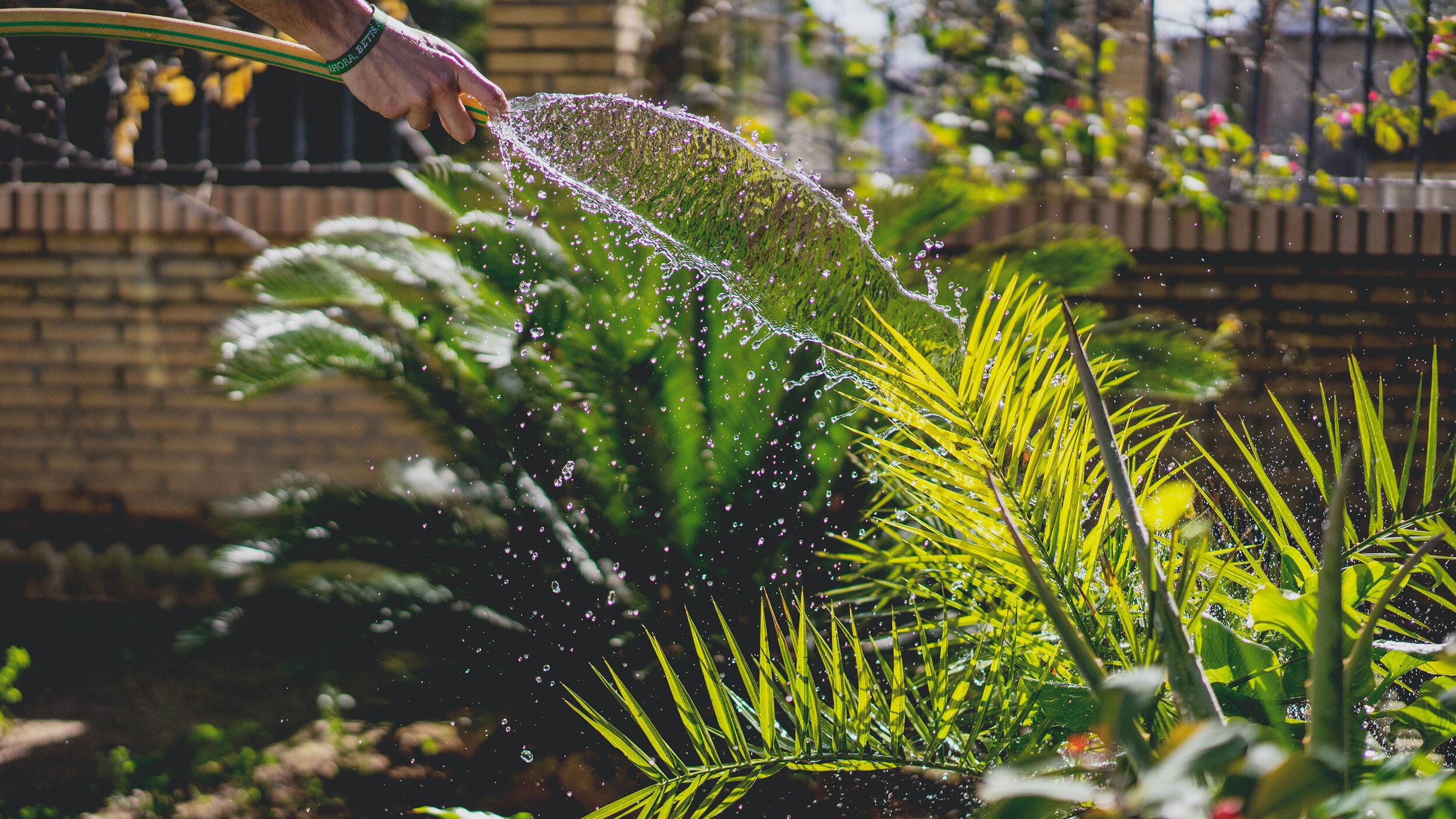
B L O G
Keeping Your Hanging Basket Beautiful
You finally have your GORGEOUS hanging basket that you hang picked from Garden Valley Farmers Market. You’re watering it and admiring its unique beauty and color that it brings to your home. With a little work, love, and the following tips, let’s keep your hanging baskets looking absolutely gorgeous and full of blooms all summer long.
You finally have your GORGEOUS hanging basket that you hand picked from Garden Valley Farmers Market. You’re watering it and admiring its unique beauty and color that it brings to your home. With a little work, love, and the following tips, let’s keep your hanging baskets looking absolutely gorgeous and full of blooms all summer long.
Location
When choosing your hanging baskets, remember to keep location in the forefront of your mind. Needing a shade plant? We recommend Ferns, Wandering Jew, and Fuchsia!
Needing a basket that’s in a sunny location? Petunia, Million Bells, and Lantana are GREAT choices for you, and come in a beautiful variety of colors.
Fertilize… slowly
Slow and steady wins the race when it comes to fertilizing your hanging basket. Why? First, if fertilizing too much, the flower/plant can become stressed by growing too fast and cause it to go into shock. Slow growth is much better than the opposite in the long run. Second, its important to fertilize because the soil is not exposed to the same soil as a garden bed would be. It’s not getting the same organic compounds and nutrients from the earth when its hanging in the air, so regular fertilizing of your basket is recommended.
Watering
How and when you water your basket is secretly an important tip. Most baskets tend to dry out faster than a bedding plant or pot would because they are exposed to more wind, so watering once (sometimes twice) daily is recommended with most hanging baskets. However, be sure to ask your sales associate for your specific plant’s watering needs if there is no tag).
When is the best time to water, you ask? We recommend early morning. Early morning watering gives the plant enough time to absorb the moisture that is needed so that it can survive the heat of the day, but any time, as long as you’re watering, is a good time.
Regular Pruning and Deadheading
Once a week, cut back and remove any damaged leaves or flower buds from your basket. You will notice a huge difference in the longevity of life from your basket if this is done and kept up with. Doing this not only increases growth in your basket, but it also increases the bloom development. And we all want that, right?!
F Y I
MOST hanging basket from Garden Valley Farmers Market do not need to be repotted, as long as they are kept trimmed back and pruned. But on the off chance that the basket might need some saving… check out the next section on what to do.
Your Plant May Have Outgrown It’s Container
If your plant starts to look overgrown, it might be time for you to repot your basket. Hanging baskets can become root bound because the roots will have no room left to grow. If you haven’t kept up with the regular pruning of your basket, you can repot your plant into a hanging basket that is a size bigger. Wire baskets filled with a coconut liner are a great option because they increase air flow through the root of the plant.
We would love to see photos of how beautiful your hanging baskets are this summer, so tag @gardenvalleyfarmersmarket in your posts, and don’t forget to use the hashtag #gardenvalleyfarmersmarket and show us your beautiful baskets!
Lastly, if you find this information helpful, we’d love it if you would support us
by sharing with your friends.
Thank you so much for joining us here. For more information on what Garden Valley Farmers Market is about, you can visit us here. If you’re wanting to visit with us, come by any of our five North Carolina locations. If you’re wanting to follow along with us, you can do so either on our Facebook, Youtube, or our Instagram. If you’re wanting to earn rewards and be easily connected with us, download our new App. And if you’re wanting to check out our other recipes and blog posts, or are needing more inspiration, follow us on our Pinterest. We’d love to have you join us in our journey of planting better, eating better, and living better.
Much love,
Your Garden Valley Farmers Market Team
Growing Gorgeous Hibiscus
With absolutely gigantic, gorgeous, and beautiful blooms, Hibiscus bushes are the perfect spring, summer, and even fall plant that will leave your landscape bright and full of color. With a variety of bloom colors ranging from yellow to pink, these hardy tropical bushes are perfect for any yard that receives full sun.
With absolutely gigantic, gorgeous, and beautiful blooms, Hibiscus is the perfect spring, summer, and even fall plant that will leave your landscape bright and full of color and depth. With a variety of bloom colors ranging from yellow to pink, these hardy tropical bushes and trees are perfect for any yard that receives full sun.
here’s how to get those gigantic, gorgeous blooms, and keep them thriving:
L O C A T I O N
Hibiscus likes warm weather, and gravitates towards the sun, so if you’re considering one (or a few) for yourself, make sure you have a sunny location in mind. Many gardeners like to put them into the ground and watch how big they will grow, but repotting into a slightly larger pot would be another great option as well.
Hibiscus blooms are also prone to tear and are very delicate, so make sure to place them in a location that has some protection from the wind.
Did you know you can also bring your Hibiscus inside in the colder months? Just make sure it receives a ton of sunlight while inside.
S O I L
If planting your precious Hibiscus into the ground, add a little bit of fresh compost to the mix to increase the soil’s pH level, as Hibiscus likes it neutral or slightly acidic.
If planting in a pot, make sure to size up your pot an inch or two in diameter. And to use a well draining potting mix, like the Daddy Pete’s Potting Mix that we have available at our stores. It is organic and will leave you with a happy plant that’s producing vibrant blooms all summer long!
W A T E R I N G
The great thing about Hibiscus is that they are drought tolerant and don’t need as much watering attention as some other plants. However, that doesn’t mean that you should neglect them.
For the first week after planting, be sure to water daily to help the roots establish into its new soil bed. After the first week, every other day should be fine.
Once your plant is established, you can taper off your water schedule to about twice a week if there is no rainfall. However, on those hot and dry North Carolina days, remember that it might need some watering love every other day.
P R U N I N G
To promote bigger, and more beautiful blooms, you will have to remove the old blooms, that have lived their best life mind you, but are no longer pretty.
When bringing your bush or tree inside for the winter, you can trim it back to about one-third of its size in the LATE winter or early spring.
Enjoy this gorgeous inspiration gallery we sourced from Pinterest for ideas on how you can use Hibiscus, either outside in your landscaping or inside of your home.
Do you enjoy growing Hibiscus in your yard to brighten up your garden? Are there other flower varieties you’d like to try? We’d love to hear about your plans in our comments below!
Please note: we truly hope you’ll come visit with us, and we would also love to see your gardening photos as well, so tag @gardenvalleyfarmersmarket in your posts, and don’t forget to use the hashtag #gardenvalleyfarmersmarket!
And lastly, if you find this information helpful, we’d love it if you would support us by sharing with your friends.
Thank you so much for joining us here. For more information on what Garden Valley Farmers Market is about, you can visit us here. If you’re wanting to visit with us, come by any of our five North Carolina locations. If you’re wanting to follow along with us, you can do so either on our Facebook, Youtube, or our Instagram. And if you’re wanting to check out our other recipes and blog posts, or are needing more inspiration, follow us on our Pinterest. We’d love to have you join us in our journey of planting better, eating better, and living better.
Much love,
Your Garden Valley Farmers Market Team
5 Reasons to Support Local
Whether you're wanting to add some color to the pots on your front porch steps, or wanting to plant those juicy tomatoes in your garden, there are many places you could buy these plants. But where is the best place to go? Sure, you could turn to your mass merchant store, but maybe this time, think more locally. If you have a local garden center, like Garden Valley Market, often times they offer a very wide variety of amazing plants/produce.
So, without further ado, here are five reasons why we think you should support your local garden center:
Whether you're wanting to add some color to the pots on your front porch steps, or wanting to plant those juicy tomatoes in your garden, there are many places you could buy these plants. But where is the best place to go? Sure, you could turn to your mass merchant store, but maybe this time, think more locally. If you have a local garden center, like Garden Valley Farmers Market, often times they offer a very wide variety of amazing plants/produce. So, without further ado, here are five reasons why we think you should support your local garden center:
1. Knowledge
Local garden centers, like Garden Valley Farmers Market, have a passion for all things gardening. Whether that's with the choices/varieties of colorful petunias that are hand picked by our owners, the fresh zucchini we just got in stock from our local farmers, or the tropical Hibiscus that's just perfect for North Carolina summer heat, knowing and learning what each plant’s needs are is very important to places like ours. Local garden centers tend to stay up to date on local weather and the specific climate zone they are located, which helps give you the accurate information that sets you up for a successful year. We can help you in deciding which flowers, shrubs, and vegetables to plant that will not only bloom, but thrive here in central North Carolina.
2. Quality
Quality is most important to us, and here’s why:
You get what you pay for. Local garden centers like Garden Valley invest in quality products, materials and supplies, which can sometimes be a bit more expensive for you, the consumer. But the phrase, "you get what you pay for", could not hold truer for us. There is much time and investment given to the plants and produce, including regular fertilizing of the plants and a constant pruning/dead-heading of the flowers in order to keep the plants healthy and at their prime.
Unique Selection. Local garden centers can also provide unique materials that would not normally be found at a mass merchant store. These items are hand picked by our owners in hopes that you will enjoy them just as much as they do.
Hint: It’s Not Consignment. Did you know that most local garden centers actually own the materials on the lot. It's bought and paid for, not purchased on consignment where it can be sent back if it doesn’t sell like in a lot of other bigger retail companies.
We want you, our neighbors, to succeed. Remembering that your success equals our success, is what makes the quality of the plants much higher at a local garden center. And it’s what makes our relationship with our community that much more important.
3. Customer Service
Shopping at local garden centers, like Garden Valley Market, can also mean that more personal attention is paid to the customer. Personal relationships are made and "regulars" become part of our gardening family. Locals can often provide the best tips and tricks as well, allowing us to learn more and share with our local customers. And we, at Garden Valley, LOVE the relationship and trust that is built between you and us.
4. Local Economy
Supporting local also means supporting your local economy. It's choosing to allow your funds to stay in your local community. And when you're purchasing your plants and produce from your local farmers market, you're purchasing and supporting your local farmers and growers in North Carolina too. We can't think of a better way to support your neighbors, friends and family.
5. Unique Community
One of the best parts of supporting local is something that you, the customer and consumer, can really enjoy. You get to keep a one-of-a-kind business, well, in business. And in return, you can experience the unique character that it brings to your local community. This can also increase your community’s tourist attraction, which means more money for your local economy. And, it's just plain FUN to go and get lost in the plants, get to know your gardeners, and enjoy the unique community that it brings to your life, and those around you.
Thank you so much for joining us here. For more information on what Garden Valley Farmers Market is about, you can visit us here. We also offer free online produce ordering and pickup for NC locals! If you’re wanting to visit with us, come by any of our five North Carolina locations. If you’re wanting to follow along with us, you can do so either on our Facebook, Youtube, or our Instagram. And if you’re wanting to check out our other recipes and blog posts, or are needing more inspiration, follow us on our Pinterest.
We’d love to have you join us in our journey of
planting better,
eating better, and
living better.
Love, Garden Valley Farmers Market
Gardening for a Beginner; All About In Ground Gardens
In ground traditional gardens are definitely the most budget friendly of the gardens because you aren’t paying for any extra materials. And with just a little bit of manual labor, you can have the garden you’ve always dreamed of! And we’ve got the best tips and tricks on how you can start your very own traditional in ground garden.
In ground gardens are definitely the most budget friendly of the gardens becuase you aren’t paying for any extra materials, but they do take a bit of manual labor to get started. But don’t worry, we’ve got the best tips and tricks on how you can start your own
I N G R O U N D G A R D E N .
(You can also check out our other two posts in this
3 part series on how to start either a Container Garden or a Raised Bed Garden)
W H E R E T O G R O W
As is the same with raised beds, the location of your garden really just depends on what you’re wanting to grow. If you’re growing vegetables like tomatoes, cucumbers, or squash/zucchini you will need a space with FULL sun, which is 6 or more hours of sunlight. But if you have an area that has less than 6 hours of sunlight exposure, maybe try growing broccoli, carrots, or cabbage. It’s also beneficial for you to know which USDA zone you live in, which you can find here.
W A T E R I N G
DRAINAGE
Before choosing your location for your beds, make sure that your beds are not in a location where there is flooding. Flooding causes your roots to rot, which means no bueno for your plants.
WATERING
The best way to know if you are needing to water your plants is the standard test for any plant. Stick your finger about 3 inches into the soil and it should feel slightly damp. If not, you’re probably due for a good watering. Also know that if it’s the hottest part of the day and your plants seem to be really sad and wilted, it might not mean that they need water. They often do this to reserve water. For this reason, checking the soil is always the best indicator on whether your plant needs water or not.
HOW TO WATER
You can water each day with a plain old hose and water individually. If you do choose this method, be careful to not get the leaves wet as this can encourage fungus growth. Another option is by using a soaker hose. Although the best option for an in ground garden might be a drip irrigation system, as this can help get a specific watering amount that is unique to each plant. But either way, just make sure to water regularly so that your plant does not stress out. (And overhead sprinklers are quite inefficient, encourage fungus, and wastes water, so we do not recommend this method.)
S I Z E
You literally can choose whatever size you want, but one thing you might want to remember is to not “let your eyes be bigger than your stomach” or so to speak. If you’re first starting out, maybe try smaller this year, and then just add to it each year once you get the hang of things.
S O I L
For in ground gardens, the best part is that you already have soil! All you probably need to do is just get your soil tested to see what you need to add to set your plants up for success. (Here is a helpful article on that here). It might also be good to add a layer of fertilizer, compost, and top soil in combination with your grounds natural soil. This will help to give your vegetables, fruits, and flowers a huge boost and keep them thriving.
S U P P O R T
Surprise, surprise, surprise, your plant is growing! YAY! But don’t sabotage it by not providing it with enough support. Plants that climb and grow up like tomatoes need support to hold them up. This helps not only keep the fruits from touching the ground, but allows for better sunlight and aeration to reach through the plant.
You can support your plant by building a “teepee” with some cane sticks and just tie the main branches to the cane as it grows.
F E R T I L I Z E
To give your flower and vegetable plants a better chance, we advise working some fertilizer into your soil. Sprinkle a layer of fertilizer evenly over the top of the soil, work into your soil, and water it. Ideally this needs to be done 1 week or two before your start planting so that it has enough time to break down, but if not it’s not a huge deal. You can follow the directions on your fertilizer’s packaging as to how much to give your soil. Also remember that too much fertilizer can actually harm your plants, so please follow the directions.
G E T T I N G S T A R T E D
Before starting, decide what you want to plant. For example, if you’re wanting to plant vegetables/fruit, ask yourself what you enjoy eating. What foods are sometimes expensive in the grocery store but you think would grow well in your container? Try those out and see how amazing gardening for yourself can actually be!
WHEN STARTING WITH SEEDS
This process takes more time to see the “fruits” of your labour, but you are able to have more of a variety in which plant you actually want, because your local garden center may not have access to those starters. But always be sure to check with your garden center, aka Garden Valley for those of you local to the Triad of North Carolina. You can also check out this post we released last year on why shopping local is important.
When starting with seeds, vegetables will generally need to be propagated into seedlings before they are placed into your pot. You can reuse some old plastic containers that you’ve used for food like yogurt containers, egg shells, citrus peels, . Plastic is preferable in the instance because it retains moisture much better than a clay pot. Whatever container you do use, make sure it is clean and that you poke holes into the bottom to allow for drainage.
WHEN STARTING WITH STARTERS
With starters, the process is shortened and there is a better likelihood that your plant will survive. And we have plenty of starters vegetables and flowers to choose from at Garden Valley!
H O W T O S T A R T
Begin by removing the grass and weeds with a sod cutter, shovel. You can also do this if you’ve planned ahead and cover with black plastic for about a month or so.
Til the area and remove and remove and big roots or rocks
Test pH level if you’re able to as this will help your soil be well balanced.
Spread about 2-4 inches of old compost or manure, and add anything that your soil might need to balance the pH levels.
Mix all of the soil together well
Plan the layout by placing your plants where they will go, and remember to keep the mature plant in mind to avoid overcrowding
PLANT YOUR HEART OUT <3
(When planting, remember to also look at how deep your plant likes to be planted, as some only like
to be just below the surface, and some plants like to be planted deep into the soil.)
Don’t forget to leave us a comment below and let us know what you’re excited to plant this year!
Thank you so much for joining us here. For more information on what Garden Valley Farmers Market is about, you can visit us here. If you’re wanting to visit with us, come by any of our five North Carolina locations. If you’re wanting to follow along with us, you can do so either on our Facebook, Youtube, or our Instagram. And if you’re wanting to check out our other recipes and blog posts, or are needing more inspiration, follow us on our Pinterest. We’d love to have you join us in our journey of planting better, eating better, and living better.
Much love,
Your Garden Valley Farmers Market Team















































